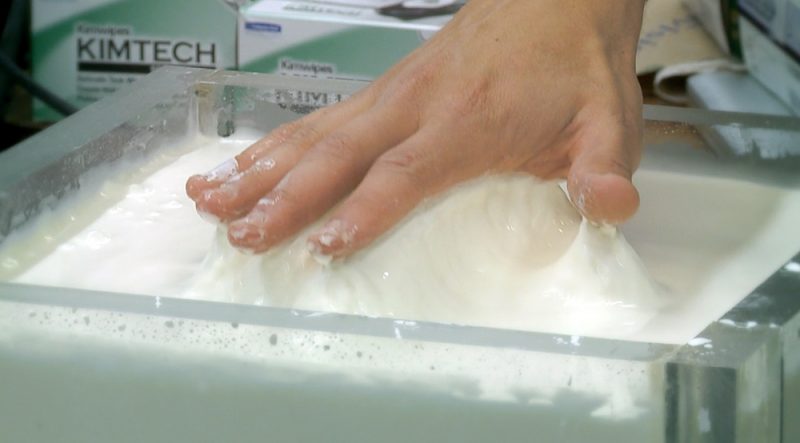Walking on water
Scientists explain why a liquid can sometimes act like a solid

Almost anyone can tell the difference between a liquid and a solid. A liquid flows. A solid stays put. You pour a liquid and push a solid. The difference seems as clear as water and ice.
But some stuff doesn’t fit neatly into either group, like the goop you get by dissolving cornstarch in water. (Cornstarch is corn flour that helps thicken pie fillings and gravies.) The concoction looks like a liquid, and can be stirred gently with your hand or a spoon. But appearances are deceiving: Fill a swimming pool with the stuff, and you can run across the surface without getting wet. It’s a good party trick — or a launching point for a science fair experiment.
“If you were to punch [it], you might break your wrist,” Scott Waitukaitis, a physicist from the University of Chicago, told Science News. He and other physicists often study the behavior of different states of matter to understand natural forces.
After watching videos of people dashing across water-cornstarch soup, Waitukaitis decided to investigate. In a new study, he and a colleague reveal the science behind the stuff that’s sometimes liquid and sometimes solid.
The scientists smacked the liquid with a metal rod and then recorded the event using high-speed video and an x-ray camera. To understand what happened, they analyzed the data using a computer program.
An aluminum rod striking a mix of cornstarch and water fails to penetrate as particles in the ooze jam together like snow compacted by a plow.
Credit: Scott Waitukaitis/University of Chicago.
The results suggest that when the rod hit the surface, the impact pushed the water molecules away. That left only the particles of cornstarch, which squeezed together acting like they were a solid. And like a solid, the clump of cornstarch stopped the metal rod. The scientists reported their findings July 12 in Nature.
Those observations may explain the strange suspension. When you slip your hand beneath the surface, water and cornstarch particles remain mixed together. But when you slap the mix — or run across —the water flows out and the cornstarch stands firm.
Daniel Bonn, a physicist at the University of Amsterdam, has conducted his own research on the cornstarch solution, by shooting bullets into the goo. He says he isn’t surprised by the new result, “but the experiment was interesting because they’re able to look inside the cornstarch as it thickens.”
Cornstarch and water explained by physicists. Credit: UChicago Creative, University of Chicago News Office.
Power Words
solid Firm and stable in shape; not liquid or gaseous.
liquid A material that flows freely but keeps a constant volume, like water or oil.
suspension A mixture in which particles are dispersed throughout the bulk of a fluid.
physics The branch of science concerned with the nature and properties of matter and energy.







